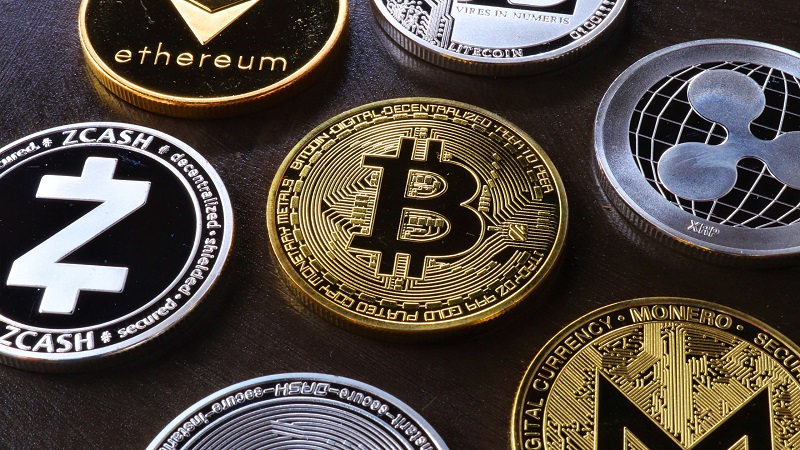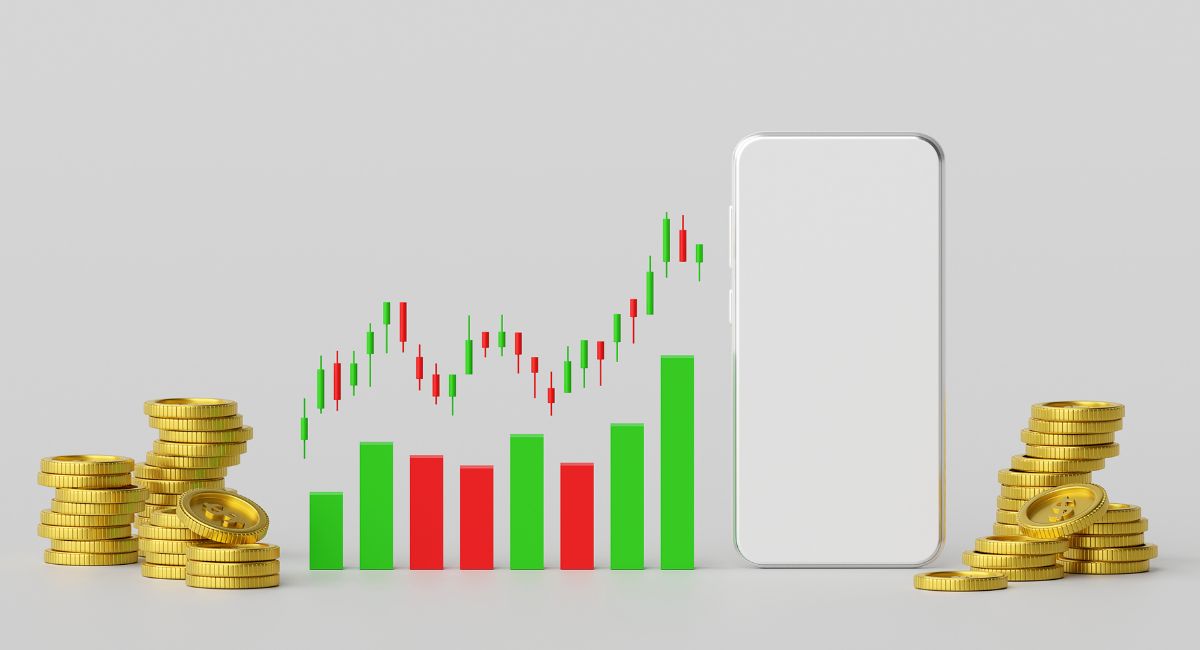Top 5 Positive Examples Of Crypto Token And Importance Of Maximum, Circulating, And Total Supply In Its World

As the crypto token ecosystem expands, investors and enthusiasts are confronted with various metrics that define a token’s supply dynamics. Three critical terms – Maximum Supply, Circulating Supply, and Total Supply – play pivotal roles in shaping perceptions of a cryptocurrency’s scarcity, distribution, and potential value. In this comprehensive exploration, we will dissect the differences between Maximum, Circulating, and Total Supply, unraveling their implications on the crypto token market and investor considerations.
Maximum Supply:

Maximum Supply is a fundamental concept in the realm of cryptocurrencies, serving as a crucial parameter that defines the absolute upper limit of tokens that can ever exist for a particular digital currency. This value is hardcoded into the protocol at the inception of the cryptocurrency, setting the ultimate ceiling for the total quantity of tokens that will be in circulation throughout its lifespan.
The significance of Maximum Supply lies in its ability to convey vital information about the potential long-term scarcity of a cryptocurrency. Understanding this metric is essential for investors and stakeholders as it plays a pivotal role in assessing the inflationary or deflationary nature of the digital asset.
In essence, a cryptocurrency with a capped Maximum Supply is often considered more attractive to investors seeking scarcity and a hedge against inflation. Bitcoin, for example, has a fixed maximum supply of 21 million coins, a characteristic that contributes to its perception as “digital gold” due to its inherent scarcity.
On the contrary, cryptocurrencies with unlimited or extremely high Maximum Supply may be perceived as more inflationary, potentially impacting the value of the digital asset over time. Investors carefully evaluate this metric to gauge the token’s economic model and its potential impact on long-term value.
The concept of Maximum Supply underscores the importance of transparency in the design and implementation of cryptocurrency protocols. It provides a clear framework for understanding the token’s scarcity dynamics, allowing investors to make informed decisions based on their preferences for inflationary or deflationary assets in the digital landscape.
Circulating Supply:

Circulating Supply is a crucial metric in the cryptocurrency space, representing the total number of tokens actively available and trading in the open market at any given time. It is distinct from the Maximum Supply, as it excludes tokens that are locked, reserved, or held by the project team, providing a real-time snapshot of the tokens available for trading.
This metric holds crypto tokens of significant importance for investors and market analysts as it plays a key role in determining the current liquidity and market capitalization of a cryptocurrency. Liquidity, in this context, refers to the ease with which an asset can be bought or sold in the market without causing a significant impact on its price.
Investors often focus on circulating supply to gain insights into the actual number of tokens in circulation. This information helps them assess various factors, including market demand, liquidity, and the potential impact on price movements. A higher circulating supply, when compared to the maximum supply, may indicate a higher level of market saturation, potentially influencing the token’s value and volatility.
Market capitalization, a widely tracked metric in the cryptocurrency space, is directly influenced by circulating supply. It is calculated by multiplying the current price of a crypto tokens by its circulating supply. Therefore, accurate information about circulating supply is essential for making informed investment decisions and evaluating a cryptocurrency’s overall market position.
Projects with a transparent and well-defined circulating supply often instill more confidence in investors, as it provide a clear picture of the token’s distribution and availability. Additionally, understanding circulating supply helps market participants assess the potential for price manipulation, as a concentrated supply in the hands of a few entities could impact market dynamics.
In summary, Circulating Supply serves as a critical metric for investors and market analysts, offering insights into a cryptocurrency’s current liquidity, market capitalization, and overall market dynamics. It aids in making informed decisions and understanding the underlying factors that may influence a token’s value in the open market.
Also, read- Circulating, Maximum, And Total Quantity Of Crypto Tokens Described
Total Supply in Crypto token:

Total Supply is a comprehensive metric in the cryptocurrency landscape and crypto tokens, encapsulating all tokens that have been generated since the inception of the digital currency. This includes not only the tokens actively circulating in the market but also those held by the project team, locked or reserved tokens, and any other units that have been created.
While Total Supply shares similarities with Circulating Supply, it provides a broader perspective on the overall token distribution. It encompasses the entirety of the tokens in existence, offering a more comprehensive understanding of the tokenomics and supply dynamics of a particular cryptocurrency.
The inclusion of tokens held by the project team, locked, or reserved tokens in the Total Supply is particularly significant. It allows stakeholders to assess the level of control and influence that the project team may have over the cryptocurrency. For instance, a large proportion of tokens held by the project team might raise concerns about potential market manipulation or influence over the token’s value.
Total Supply is instrumental in evaluating long-term considerations such as inflation rates and the potential dilution of value. If a cryptocurrency has a mechanism for ongoing token creation, understanding the Total Supply is crucial for estimating the impact of inflation on the overall value of the digital asset. It provides investors with insights into the token’s economic model and sustainability over time.
Moreover, Total Supply is a key factor in determining metrics like market capitalization and fully diluted market capitalization. The fully diluted market capitalization considers the total supply of tokens, providing a theoretical upper limit on the market value of a cryptocurrency, assuming all tokens were in circulation at their current price.
In summary, Total Supply offers a comprehensive view of a cryptocurrency’s token distribution, encompassing all created tokens. This metric is vital for understanding the potential influence of the project team, evaluating long-term considerations such as inflation, and estimating the fully diluted market capitalization of a digital asset. Investors use Total Supply alongside other supply-related metrics to make informed decisions about their investments in the dynamic and evolving cryptocurrency market.
Impact on Scarcity and Value Perception:
The relationship between supply metrics, including Circulating Supply, Total Supply, and Maximum Supply, plays a pivotal role in shaping investors’ perceptions of the scarcity and potential value of a cryptocurrency. These metrics are interconnected and influence how the market views the availability and rarity of a digital asset.
A lower Circulating Supply, especially when coupled with a capped Maximum Supply, tends to signal potential scarcity. This scarcity is often associated with a positive perception of the token’s value. Investors often interpret a limited number of tokens available for trading as a factor that could drive up demand, potentially leading to price appreciation. Cryptocurrencies with lower circulating supplies may be viewed as more exclusive and, in some cases, may be compared to precious commodities like gold, contributing to their perceived value.
However, it’s crucial to recognize that the scarcity narrative is not solely determined by these supply metrics. The rate at which tokens are released from reserves and team holdings also influences the overall perception of scarcity. If a significant portion of the total supply is held in reserves or by the project team and is released gradually into circulation, it may mitigate the immediate impact of a low circulating supply on perceived scarcity. Investors consider not only the current supply metrics but also the distribution plans outlined in the project’s whitepaper and the transparency of token release mechanisms.
Additionally, the interplay between these supply metrics and factors like market demand, utility, and the project’s overall ecosystem also contributes to the value perception of a cryptocurrency. A token’s scarcity alone does not guarantee value; its utility, demand, and the strength of the underlying project are equally important factors.
In conclusion, the relationship between supply metrics influences how investors perceive the scarcity and potential value of a cryptocurrency. A lower circulating supply, coupled with a capped maximum supply, can contribute to a positive perception of scarcity and value. However, careful consideration of token release mechanisms, distribution plans, and broader market factors is essential for a comprehensive understanding of a cryptocurrency’s potential value proposition in the dynamic and evolving crypto landscape.
MVCScan has just updated the circulating supply details for MSP tokens. 🌟 They are now pulling the latest data directly from MVCSwap. Check out the latest data at: https://t.co/u2tlvJO2Bn pic.twitter.com/Ys52zIkdTb
— MVCSwap (@mvcswap) January 10, 2024
Inflationary vs. Deflationary Models:

The interplay between Maximum Supply, Circulating Supply, and Total Supply is instrumental in determining whether a cryptocurrency operates on an inflationary or deflationary model. These models have distinct characteristics that significantly impact the tokenomics and value perception of a digital asset.
- Inflationary Models: Inflationary cryptocurrencies have mechanisms that lead to an increase in the token supply over time. This can occur through ongoing issuances, rewards, or other mechanisms that introduce new tokens into circulation. The purpose of inflationary models is often to incentivize network participants, such as miners or validators, and to ensure a dynamic ecosystem.The continuous introduction of new crypto tokens may result in a dilution of existing token values, as the overall supply increases. Investors and stakeholders need to carefully consider the inflation rate and its potential impact on the purchasing power of the cryptocurrency. High inflation rates could lead to a decrease in the perceived value of the token over time.
- Deflationary Models: In contrast, deflationary cryptocurrencies operate with a fixed Maximum Supply, meaning there is an absolute limit to the total number of tokens that can ever exist. This fixed supply can create a perception of scarcity, as the available tokens become more limited over time, potentially driving up demand and value.Deflationary models often align with the concept of digital gold, where the cryptocurrency is seen as a store of value similar to precious metals like gold. Bitcoin is a notable example of a deflationary cryptocurrency with a capped maximum supply of 21 million coins, contributing to its reputation as a scarce and valuable asset.
The choice between an inflationary or deflationary model reflects the underlying philosophy and goals of a cryptocurrency project. Each model has its advantages and potential drawbacks, and crypto tokens decision often depends on the project’s vision for economic sustainability, utility, and overall ecosystem dynamics.
In conclusion, the interplay between supply metrics defines whether a cryptocurrency operates on an inflationary or deflationary model. Understanding these models is crucial for investors and stakeholders as it directly influences the perceived scarcity and potential value of the digital asset in the ever-evolving cryptocurrency landscape.
Examples from the Crypto token Space:

Certainly, let’s delve into real-world examples of cryptocurrencies and how their supply dynamics influence market perceptions:
- Bitcoin (BTC):
- Supply Dynamics: Bitcoin operates on a deflationary model with a capped Maximum Supply of 21 million coins. This scarcity is a foundational aspect of Bitcoin’s value proposition.
- Market Perception: Bitcoin is often referred to as “digital gold” due to its capped supply, reinforcing its potential scarcity and store of value. The limited supply is a key factor in the narrative that positions Bitcoin as a long-term hedge against inflation.
- Ethereum (ETH):
- Supply Dynamics: Ethereum initially had an uncapped maximum supply, leading to concerns about potential inflation. However, Ethereum 2.0, the ongoing upgrade, aims to transition the network to a proof-of-stake consensus mechanism, significantly altering its supply dynamics.
- Market Perception: The transition to Ethereum 2.0 has implications for Ethereum’s supply model, and investors closely monitor these changes. If successfully implemented, the move to proof-of-stake could reduce issuance and potentially impact the circulating and total supply dynamics, influencing investor sentiment.
- Ripple (XRP):
- Supply Dynamics: Ripple, the company behind XRP, initially held a significant portion of XRP tokens in escrow. The company periodically releases a portion of these escrowed tokens, affecting the circulating supply.
- Market Perception: The controlled release of XRP tokens from escrow has been a point of discussion in the crypto community. Investors and analysts closely watch these releases as they impact circulating supply, potentially influencing XRP’s market dynamics and value perception.
- Cardano (ADA):
- Supply Dynamics: Cardano is designed with a fixed maximum supply of 45 billion ADA tokens. The circulating supply increases through staking rewards, but the total supply is capped.
- Market Perception: The fixed maximum supply contributes to Cardano’s narrative as a deflationary asset. Investors consider the capped supply as a factor in evaluating the potential long-term value and scarcity of ADA.
- Litecoin (LTC):
- Supply Dynamics: Litecoin, often considered the silver to Bitcoin’s gold, has a maximum supply of 84 million coins, four times that of Bitcoin. This capped supply contributes to Litecoin’s scarcity narrative.
- Market Perception: Similar to Bitcoin, Litecoin’s capped supply is part of its appeal as a store of value. The limited number of coins creates a perception of scarcity, influencing investor sentiment.
In conclusion, examining examples from the crypto token space, such as Bitcoin, Ethereum, Ripple, Cardano, and Litecoin, demonstrates how supply dynamics impact market perceptions. The interplay between maximum, circulating, and total supply contributes to the narrative surrounding each cryptocurrency, influencing investor sentiment and market dynamics.
Conclusion:
Navigating the complexities of crypto token supply involves a nuanced understanding of Maximum, Circulating, and Total Supply. These metrics play pivotal roles in shaping market perceptions, investor sentiment, and the overall dynamics of a cryptocurrency. As the crypto token landscape continues to evolve, a comprehensive grasp of these supply metrics becomes essential for making informed investment decisions and participating in a rapidly changing financial ecosystem.
Related posts
Editor's Choice
- Generative Art NFTs: Top 10 Amazing Reasons Its A Marriage Of Creativity And Code
- Mastering Fear In Crypto Trading: Top 10 Amazing Tips To know In 2024
- DTX Exchange Overcomes Bearish ETH Sentiment as Fantom (FTM) and PEPE Crash
- Demystifying Intriguing Total Market Cap: Your Guide to Crypto Common Terms In 2024
- Top 10 Intriguing Reasons Gaming Is Embracing Crypto and In-Game Assets But Not Ditching Everything Else
Hottest Blockchain News Daily
Get our latest posts and announcements in your inbox.
[cn-social-icon attr_class=”social-share-side”]




























































